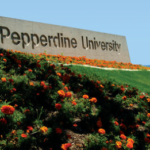What is a Likely Letter in College Admissions?
What’s Covered:
- Why Do Colleges Send Likely Letters?
- What’s the Difference Between a Likely Letter and Early Write?
- When Are Likely Letters and Early Writes Usually Sent?
- Which Colleges Send Likely Letters/Early Writes?
- What Does it Mean if I Don’t Get a Likely Letter?
With a great deal of emphasis placed on the competition among college-bound students to get into the school of their choice, it’s often overlooked that colleges are also in a competition amongst themselves to attract top applicants. One way in which top schools seek to woo particularly desirable students is with likely letters.
What is a likely letter? A likely letter is a message sent to select students before an institution makes its official admissions decisions. In the letter, a school will indicate its intent to admit the student; in other words, they are “likely” to be accepted. To learn more about likely letters and what they mean for you, read on.
Why Do Colleges Send Likely Letters?
There are a handful of reasons top schools send likely letters to especially strong applicants, the most notable of which is to increase their yield rate, while securing the enrollment of the most outstanding applicants. Yield rate is simply the percentage of admitted students who decide to enroll.
What’s not so simple about yield rate is its importance to colleges and universities: to them, yield rate is a demonstration of their desirability as a destination for the best and brightest college applicants. Consequently, many of the nation’s most esteemed institutions also have the highest yield rates. For example, Harvard University (83.0%), Stanford University (83.7%), and the Massachusetts Institute of Technology (85.0%).
Likely letters help selective schools maintain their high yields by keeping top applicants interested and engaged with them as they wait for their official admissions decisions in late March and early April. A likely letter demonstrates the school’s interest in the student, flatters them, leads to a more positive impression of the school, and increases the odds of the student matriculating.
Likely letters are frequently accompanied with an invitation to events and programs such as diversity weekends and all-expenses paid campus visits. These invitations allow colleges to both further ingratiate themselves to the applicants and provide more time to recruit them to their institutions.
Many top US schools have policies where they must wait to notify all applicants of their admissions decisions simultaneously, but a likely letter is a way for admissions officials to circumvent these policies by letting an applicant know of their “likely” admission.
What’s the Difference Between a Likely Letter and Early Write?
Another type of early admissions notification exists, and it’s called an early write. The difference between a likely letter and an early write is how definite the acceptance is. A likely letter only signals the institution’s intention to admit a student, but is not a formal acceptance letter. It’s understood, however, that all “likely” students are admitted, unless their profile changes for the worse. For example, if the recipient of a likely letter drops their advanced classes, gets arrested, or otherwise does something negative, a school can change their mind about their admissions decision.
Conversely, an early write is an official acceptance that comes early. A school can still rescind their acceptance if the student does something negative, but the student can be 100% sure that they are accepted at that time, based on the letter. Early writes are common at top liberal arts colleges such as Williams and Amherst.
When Are Likely Letters and Early Writes Usually Sent?
The majority of colleges notify their regular admissions decisions sometime in late March or early April. For example, all of the Ivy League schools release their decisions on the same day—affectionately called Ivy Day. Likely letters and early writes are commonly sent to students from mid-February to early March.
What Does a Likely Letter/Early Write Look Like?
The particular wording of likely letters will vary from school to school, but in general, they follow the same template, highlighting the applicant’s highly probable acceptance and the institution’s enthusiasm to have them as part of their student body. The letters are commonly written in a flattering tone and will foreshadow the arrival of a formal acceptance letter in the future.
To get an idea of the platitudes found in a likely letter or early write, here is an example of the latter from Stanford University: “We were inspired and humbled by your energy, imagination, talent, and heart, and this early approval is a tribute to your extraordinary achievements and passion for using your strengths to better our world. We confer this distinction on very few students, and we are thrilled to bring you the wonderful news.”
Likely letters are a way to keep you connected to the school, so many of them also include an offer to visit the college. For example, this likely letter to a prospective student from Columbia University encouraged them to attend one of its Columbia College Days on Campus for accepted students: “We hope you plan to attend one of our two Columbia College Days on Campus weekends…when events for admitted students will include a hosted overnight, visit, a chance to sit in on classes, a tour of New York City and much more.”
Other times, likely letters will remind students that this isn’t an official acceptance and their actions can put their enrollment in jeopardy. For example, one year Yale University’s likely letters included the line: “Please know we will review your mid-year and final grades carefully, and that we expect you to maintain your present level of academic performance and personal integrity for the remainder of the year.”
Which Colleges Send Likely Letters/Early Writes?
Likely letters and early writes are not openly advertised by schools, hence there is no comprehensive list of schools that send them. However, there is a record of some schools sending these letters in the past. All of the Ivy League schools have used likely letters to court must-have applicants.
Commonly, the Ivy League sends these letters to student athletes, as they possess the rare blend of academic prowess and athletic skill that makes them particularly impressive. It’s also a way to entice student athletes who are probably receiving scholarship offers from other schools. However, students who are exceptional in other ways are also potential recipients of likely letters.
It’s not just the Ivy League that sends likely letters to extremely appealing applicants. Institutions such as Barnard, Brandeis, Bowdoin, Clark, College of William and Mary, Duke, MIT, Rice, Stanford, University of Chicago, UCLA, UNC Chapel Hill, and UVA have all reportedly sent top-notch applicants likely letters. Similarly, high-rated liberal arts colleges like Amherst, Williams, Smith, and Grinnell have also been known to send likely letters or early writes.
As mentioned, many likely letters and early writes come with an invitation to visit campus. For example, Vanderbilt University sends around 200 early writes in February to students from various minority backgrounds. In the letter, they invite the accepted students to campus for MOSAIC (Medley Of Students And Ideas Connecting), a multicultural student weekend in March. The goal of the program is to attract talented students to the university and maintain an ethnically and culturally diverse campus. Other schools also have similar diversity weekends for accepted students, such as Amherst College.
What Does it Mean if I Don’t Get a Likely Letter?
If, up until reading this, you wondered what a likely letter was and are now nervous about not receiving one, don’t be. The vast majority of students will not learn of their admissions status until the date of the school’s official admissions decisions. For example, Vanderbilt invites 200 students to their MOSAIC Program, but admits around 2,000 students yearly—in other words, only around 10% of accepted students get a likely letter. Similarly, in 2015, the University of Pennsylvania received 37,267 applications and only accepted 3,697 students. Of those 3,697, an estimated 400 students received a likely letter.
The bottom line is: If you don’t get a likely letter, don’t panic! If you do get one, however, know that you’re one of the school’s top applicants, and you can be relatively sure that you’ll receive an official acceptance, as long as you continue putting forth your best.
How to Calculate Your Odds of Acceptance
Rather than agonizing over whether or not you’ll receive a likely letter from your dream school, check out CollegeVine’s free chancing engine. It takes into account just about every element of your application (other than your interview, letters of recommendation, and essays, which aren’t quantifiable), including your grades, course rigor, test scores (if you have them), and extracurriculars, to give you personalized odds of acceptance at all of your top choice schools.



